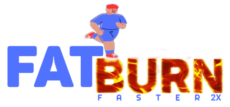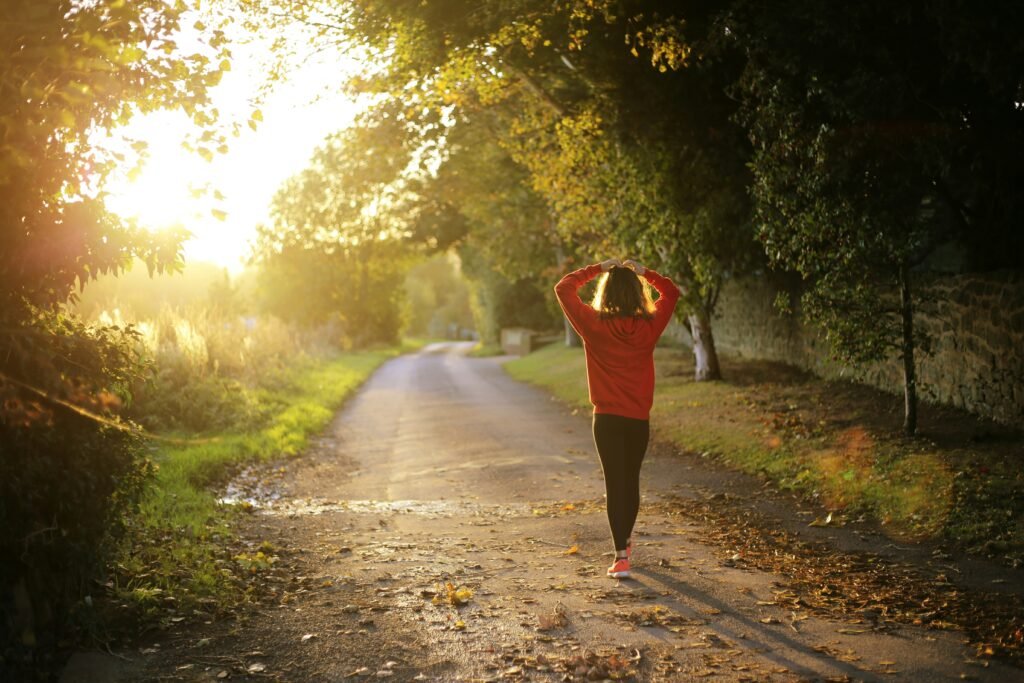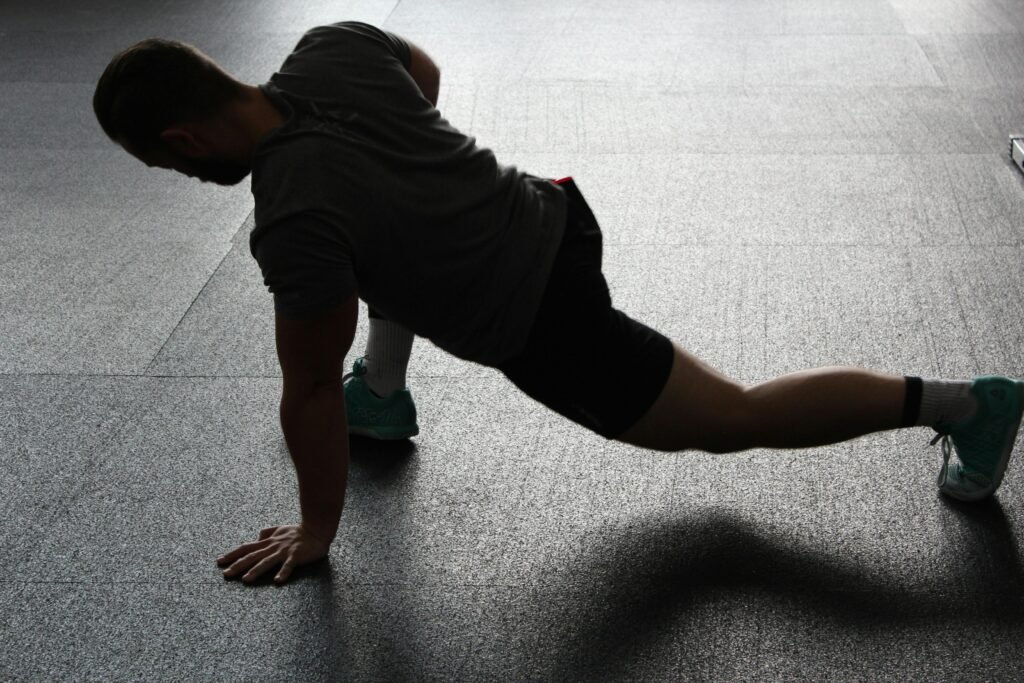Hey there, fitness friends! We all know cycling is amazing for your cardio. It gets your heart pumping, lungs burning (in a good way!), and burns some serious calories. But what about building muscle? Can those long rides on your trusty two-wheeled companion actually help you sculpt some impressive legs, glutes or abs definition?
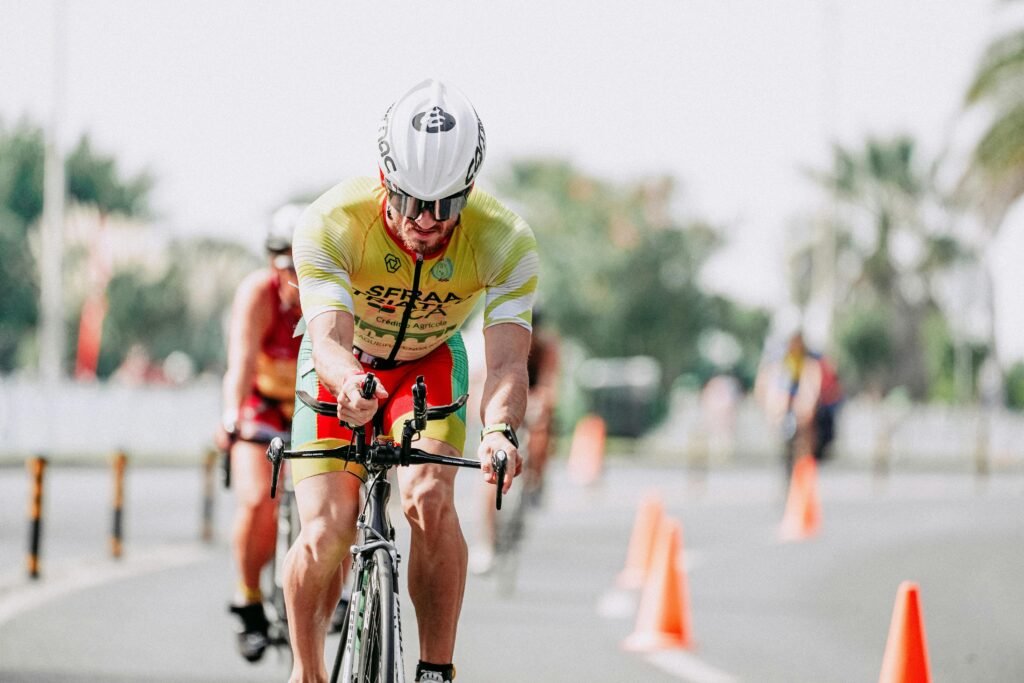
Let’s hop on our metaphorical bikes (because real bikes are for outside, and it’s blog time!) and explore the world of cycling and muscle building. Buckle up, because we’re in for a fun ride!
The Truth Behind the Tires: Does Cycling Build Muscle?🚴
The good news? Absolutely! Cycling is a fantastic way to target and strengthen several muscle groups, especially your legs, glutes and core. Imagine yourself pushing down on those pedals – that’s your quads doing the heavy lifting (literally!). The constant pedaling motion works on your hamstrings, glutes and calves giving your lower body a serious workout. But wait, there’s more! Your core and upper body muscles are also engaged for balance and steering, making cycling a full-body exercise in disguise. In this blog post we are diving into these below topics:
- Beyond the Burn: The perks of cycling.
- How cycling transforms your Legs?
- How cycling can build strong Glutes?
- How cycling maximize your legs and glutes?
- How cycling can build strong abs?
Now, hold on a sec. While cycling can definitely build muscle, it’s not going to turn you into a superhero overnight (although, hey, the spandex some cyclists wear might make you feel that way!). Cycling is more focused on endurance, using muscle fibers built for sustained activity. These are smaller than the muscle fibers used for short bursts of power, which is what weight training targets.
So, what does this mean for your physique? Cycling will give you more toned and defined muscles, rather than massive bulges. Think sleek, sculpted legs that look amazing in shorts, not bodybuilder biceps (although, those are pretty impressive too!). This muscle definition not only looks great, but also translates to improved power output on the bike. Every pedal stroke becomes more efficient as your muscles get stronger.
👉Beyond the Burn: The Perks of Cycling🚴♀️
Building muscle is fantastic, but cycling offers a whole bouquet of benefits that go way beyond sculpted legs, abs or core (although those are pretty sweet too!). Here’s a taste of what you can expect:
- Cardio Champion: Cycling is a fantastic way to improve your cardiovascular health. It strengthens your heart, lungs, and improves circulation, keeping you feeling energized and ready to tackle anything.
- Low-Impact Love: Unlike some high-impact exercises, cycling is gentle on your joints. This makes it a great option for people of all ages and fitness levels.
- Mental Magic: Exercise is a well-known mood booster, and cycling is no exception. A good ride can clear your head, reduce stress, and leave you feeling happy and positive.
- The Great Outdoors: Cycling is a fantastic way to explore your surroundings. Hit the local trails, cruise down scenic roads, or join a group ride and make some new friends. It’s a fun and social way to get your exercise in.
👉The Power of the Pedal: How Cycling Transforms Your Legs🚵♂️
Cycling is a beloved activity for many reasons. It’s a fantastic way to explore the outdoors, get your heart pumping, and burn some serious calories. But for leg lovers (and let’s be honest, who isn’t?), cycling offers a unique benefit: sculpted, strong legs.
So, what exactly does cycling do to your legs? Buckle up, because we’re about to delve into the fascinating world of cycling and its impact on your lower limbs.
The Muscle Makers: A Powerhouse for Every Push
Imagine yourself conquering a hill, legs pumping furiously. That’s not just a mental image – it’s a testament to the muscle groups cycling engages. The constant pedaling motion primarily targets your quads, the powerful muscles on the front of your thighs. They’re the workhorses, responsible for extending your knee and propelling you forward with each stroke.
But the party doesn’t stop there. Cycling also strengthens your hamstrings, the muscles on the back of your thighs, which help with knee flexion and power during climbs. And don’t forget your calves, the unsung heroes that provide stability and power with every push-off.
Building vs. Toning: Unveiling the Sculpting Power
Cycling excels at building muscle endurance, not bulk. Unlike weight training, which uses short bursts of power to build massive muscle fibers, cycling focuses on sustained effort. This translates to sculpted, toned legs rather than bulky quads. Think sleek lines and impressive definition, perfect for rocking those shorts or cycling tights with confidence.
The toned look isn’t just aesthetically pleasing; it also translates to improved cycling performance. Stronger muscles mean more efficient pedaling, leading to increased power output and endurance on the bike. Those climbs that once seemed daunting become opportunities to conquer, all thanks to your cycling-sculpted legs.
Beyond Strength: The All-Encompassing Benefits of Cycling
While strong legs are a fantastic perk, cycling offers a treasure trove of benefits for your legs and overall health. Here are some additional reasons to love cycling:
- Improved Flexibility: Cycling helps maintain and improve flexibility in your hips, knees, and ankles. This increased range of motion not only benefits your cycling but also improves your overall mobility and reduces your risk of injuries.
- Joint-Friendly Fitness: Unlike high-impact activities like running, cycling is a low-impact exercise. This makes it a fantastic option for people with joint pain or injuries, allowing you to stay active without putting undue stress on your knees and ankles.
- Enhanced Circulation: Cycling gets your blood pumping, improving circulation throughout your body, including your legs. This can help reduce swelling, improve recovery time, and keep your legs feeling healthy and energized.
👉Get a Lift with Every Pedal Stroke: How Cycling Can Build Strong Glutes🚵♀️
Cycling is often praised for its cardiovascular benefits and leg-toning prowess. But what about your backside? Can those long rides on your trusty steed actually sculpt those coveted, glute-tastic curves? The answer is a resounding yes! Let’s delve into the world of cycling and unlock the secrets to building strong glutes with every pedal stroke.
Glute Engagement: The Powerhouse Behind the Push
Your glutes, also known as your gluteus maximus, are the largest muscles in your body. They’re responsible for hip extension, a crucial movement in cycling. Imagine yourself powering up a hill – that forceful extension at the top of your pedal stroke? That’s your glutes firing on all cylinders, propelling you forward. Cycling constantly engages these muscles, strengthening and toning them over time.
Beyond Just Pushing: The Multi-Dimensional Glute Activation
But cycling isn’t just about pushing down. The key to glute activation lies in proper form. Here’s where things get interesting:
- Posture Matters: A slight forward lean with a flat back during your ride engages your core and glutes more effectively than a slouched position. Think of yourself as a powerful engine, not a sack of potatoes on wheels!
- The Power of the “Pull”: While pushing down on the pedals activates your glutes, don’t forget the “pull-up” phase at the bottom of the stroke. Engaging your hamstrings and glutes to pull your foot upwards helps maintain power and further activates those gluteal muscles.
- Hill Climbing Hero: Hills are your glute-building best friend. The increased resistance forces your glutes to work harder, leading to greater strength and definition. So, embrace those climbs and conquer them with a powerful glute squeeze!
👉Be Ready To Maximize Your Legs & Glutes!🚵
- Hill Climbing Hero: Embrace those hills! The increased resistance forces your legs and glutes to work harder, leading to greater strength and definition. Conquer those climbs and feel the burn!
- Interval Training: Incorporate interval training into your routine. Alternate between high-intensity bursts (sprints or climbing) and recovery periods. This keeps your muscles challenged and builds endurance, leading to stronger legs and a perkier backside.
- Gear Up for Challenge: Don’t be afraid to use higher gears. This increases resistance, forcing your leg and glute muscles to work harder to maintain speed. It challenges them to adapt and grow stronger.
- Spin it Up: Maintain a higher cadence (pedal strokes per minute) with a lighter gear. This can activate your glutes more effectively and build endurance in your quads and hamstrings.
Beyond the Bike:
- Strength Training Synergy: Cycling is fantastic, but don’t neglect targeted strength training exercises. Leg workout and back workout will strengthen your legs and backs which will make you more stronger for cycling. Squats, lunges, deadlifts, and glute bridges isolate and strengthen your legs and glutes, translating to better cycling performance and even stronger legs.
- Fuel Your Machine: Remember, muscle doesn’t build on air! Make sure you’re feeding your body the right nutrients and healthy foods to support muscle growth. Focus on high protein food to repair and build muscle tissue, and don’t forget about carbs for energy during those intense rides.
Bonus Tip: Consider incorporating single-leg exercises like single-leg squats or deadlifts into your routine. This challenges your balance and forces each leg to work independently, leading to more balanced leg development.
By incorporating these tips into your cycling routine, you can maximize leg and glute muscle gain while enjoying the many other benefits cycling offers. Remember, consistency is key! The more you ride with proper form and incorporate these strategies, the sooner you’ll see and feel the difference in your legs and backside.
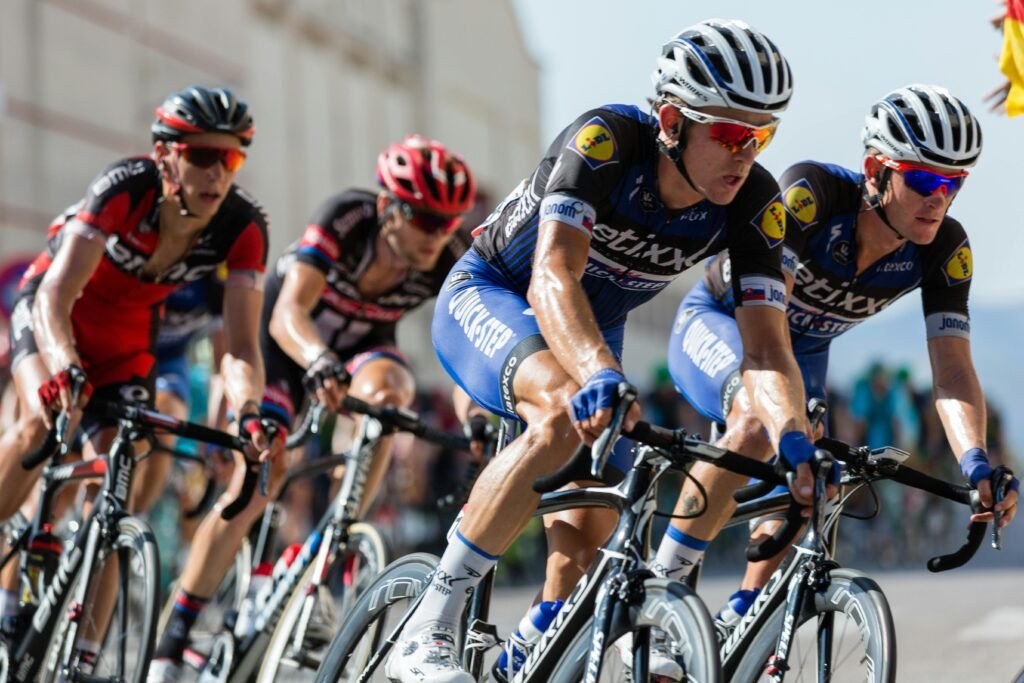
👉Don’t Forget About Building Six Pack Abs!🚴♂️
Cycling is a fantastic activity for overall fitness, but it won’t deliver the kind of six-pack abs you might see from targeted core exercises. Here’s why:
The Core: More Than Just Abs
Your core is a complex network of muscles that goes beyond just your abs (although those are important too!). It encompasses muscles in your lower back, hips, and runs all the way up to your shoulders and neck. This network acts as your body’s central hub, providing stability and facilitating movement throughout your torso.
The Abs in Action on the Bike
While cycling doesn’t isolate your abs like crunches, your abs do play a role:
- Maintaining Posture: Strong abs help you maintain an upright, stable posture on the bike. This prevents slouching, which can lead to back pain and fatigue.
- Power Transfer: Your abs work with your obliques (side abs) to transfer power generated by your upper body (think steering and maneuvering) to your legs for efficient pedaling.
Building Rock-Hard Abs vs. Core Endurance
Cycling primarily builds core endurance, not isolated muscle mass like weight training. It strengthens your abs to maintain posture and transfer power, but it won’t lead to the kind of definition often associated with six-pack abs.
Maximizing Ab Engagement While Cycling
Here are some tips to get the most out of cycling for your abs:
- Engage Your Core: Think of your core as a corset – it should be slightly tightened throughout your ride. This provides stability and prevents unnecessary movement in your upper body.
- Focus on Form: A flat back with a slight forward lean activates your core more effectively than a slouching position. This engages your abs to maintain that stable posture.
Building Rock-Solid Abs: Beyond the Bike
For sculpted abs, consider incorporating targeted core exercises into your routine alongside cycling:
- Planks: These classic exercises come in many variations (high plank, low plank, side plank) and target your entire core, including your abs.
- Crunches and Sit-Ups: While not the be-all and end-all, crunches and sit-ups still engage your abdominal muscles.
- Hollow Body Holds: This exercise strengthens your entire core, including your abs, by engaging them isometrically (holding a position).
The Takeaway: A Strong Core for a Stronger Ride
Cycling strengthens your core for better stability and power transfer on the bike. While it won’t sculpt rock-hard abs on its own, it contributes to a strong core foundation. Combine cycling with targeted core exercises for a well-rounded approach to core strength and that coveted abdominal definition.
Remember, a strong core is essential for overall fitness and injury prevention. So, happy cycling, and don’t forget to engage those abs for a powerful and comfortable ride!
So You Want to Ride? Let’s Get Rolling!
Whether you’re a seasoned cyclist or just starting out, cycling is a fantastic way to improve your overall fitness and build some impressive muscle definition. Learn more about the impact of cycling in building muscle.
Remember, it’s all about finding the right intensity, incorporating some variety into your routine, and fueling your body. So explore more about benefits of cycling, incorporate cycling into your daily life for doing cardio as well as for building muscle.
May be you can replace your leg day for cycling! What do you think? Comment below and let us know what’s going on your mind. Let’s roll your bike Happy Cycling! 👏🚴🚵♂️🤝
